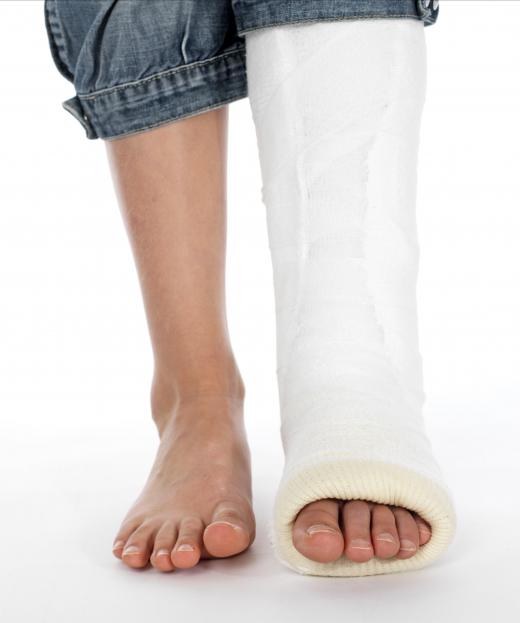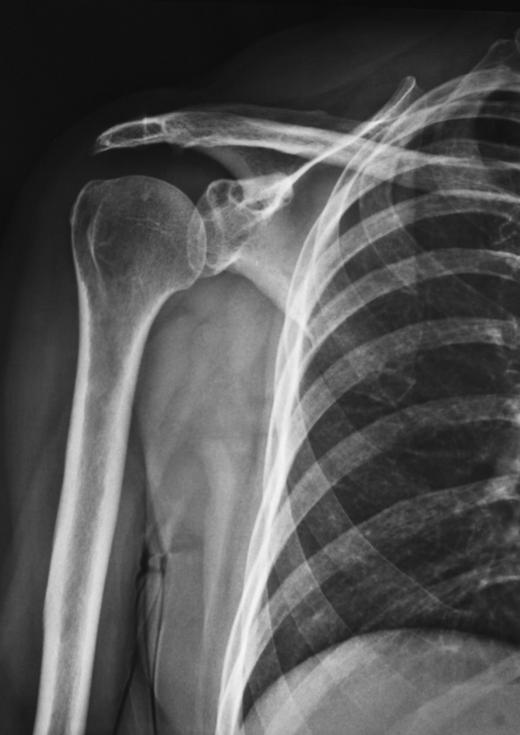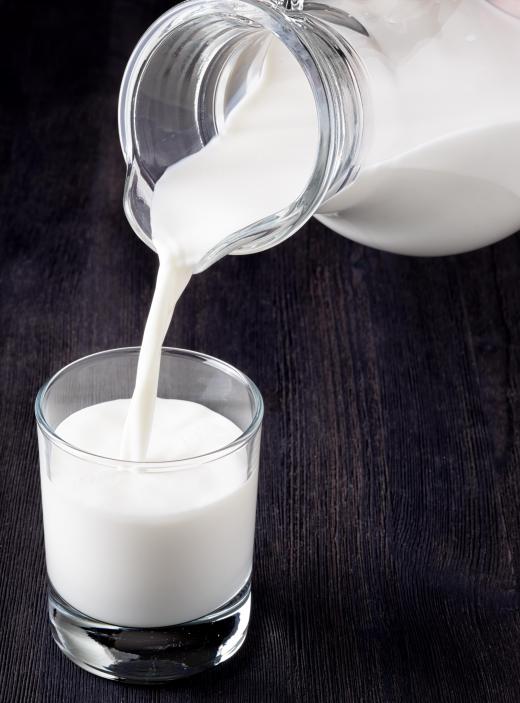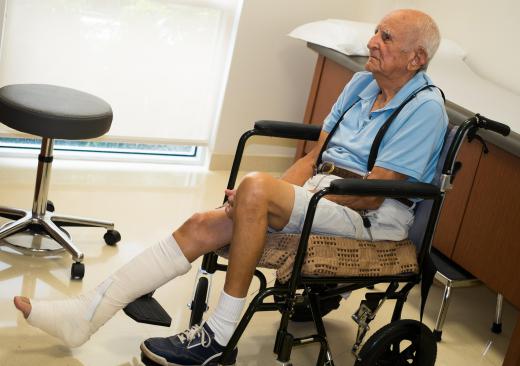What are Osteoblasts?
 Mary McMahon
Mary McMahon
Osteoblasts are cells which originate in the bone marrow and contribute to the production of new bone. These cells build up the matrix of the bone structure and also play a role in the mineralization of the bone matrix. Bone is constantly being built up and broken down by the body, making osteoblasts rather critical. The counterpart to the osteoblast is the osteoclast, a cell which is responsible for breaking down bone.
As people get older, their production of osteoblasts decreases. This is why older people tend to have more brittle bones which are at risk of fracture, and why it takes longer for them to heal after breaks, because they have fewer cells to rebuild the damaged bone. Bone health can also be influenced by the amount of available calcium in the diet, as osteoblasts need calcium to work with in the process of building up bone.

These cells can differentiate into several different cell types, in addition to working to build up bone. An osteocyte is an osteoblast which becomes trapped in the bone matrix. Osteocytes cannot divide, and they develop long extensions to communicate with other osteocytes. These cells move nutrients and waste through the bone matrix. Bone-lining cells are osteoblasts which become attached to the surface of the bone, flattening in the process.

Bone-lining cells appear to play a role in the activation of osteoblasts and osteoclasts, responding to hormones and changing conditions in the body to trigger the most appropriate activity. They also regulate the amount of calcium which can enter the bone, acting as a selectively permeable membrane which can either allow calcium to flow across into the bone, or block calcium absorption.

The osteoblasts are critical to the structure and integrity of the bone. They don't just build new bone, they also maintain and strengthen existing bone, ensuring that the matrix is not compromised and that it is as even as possible. Tag teaming with osteoclasts, they keep the bone in a constant state of renewal which eliminates areas of weakness and addresses cracks, fractures, and other problems.

Viewed in magnification and cross-section, a piece of bone reveals a thriving assortment of osteoblasts and osteoclasts at work, and the tiny pits, known as lacunae, which house the star-shaped osteocytes can be clearly seen. Magnification also shows the complexity and detail of the mineralized matrix which makes up the bones in everything from shrews to elephants.
AS FEATURED ON:
AS FEATURED ON:















Discussion Comments
Eventually the osteoblast is surrounded by the growing bone matrix and then gets trapped within the bone matrix. This creates an osteocyte or bone cell.
Strong bones are a sign of good health and a good diet. Making sure you have a strong daily intake of calcium in dairy products and other necessities is an important part of your health routine.
Ancient literature refers to healthy marrow as being a sign of wellness and prosperity. In the Levant, writers and poets would often use graphic and physical imagery in analogies and phrases.
Post your comments